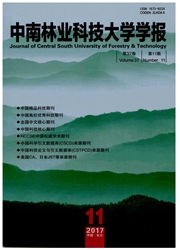

 中文摘要:
中文摘要:
核算了我国31个省区旅游住宿碳排放量,并分析了其时空动态特征与影响因素。结果发现:1该碳排放在2000-2003、2004-2006及2007-2010年间分别经历了起伏、线性与起伏3个增长阶段。两次起伏可能是由于"非典"疫情及金融危机的影响作用。2分省区看,北京总量和人均量均最大,表明其旅游住宿资源开发最为齐备,未来可开发的空间相对较小。同样地,海南、广东和上海也较小。但海南的碳排放强度总最大,表明其经济增长对旅游业依赖性最大。相反地,北京经济增长越来越不依赖旅游业发展。碳排放密度则西北小,东南大,呈现类"胡焕庸线"特征。3影响因素按大小可依次排序为:交通活动、研发活动、电信配套设施建设活动、宏观经济活动、城镇化建设活动、教育活动、传媒活动、医疗卫生活动及人口增长活动。据此,提出了一些降低旅游住宿碳排放的对策建议供决策者参考。
 英文摘要:
英文摘要:
Taking China's 31 provinces as examples, we calculate the carbon emissions(CE) from tourism accommodation and analyze their spatial-temporal characteristics, and identify their influencing factors. The results show that:(1) the total CE of China's tourism accommodation experienced three growth stages(fluctuant, linear and fluctuant) in 2000 ~ 2003, 2004 ~ 2006 and 2007 ~ 2010, respectively. The two fluctuant stages maybe arise from the effects of the "SARS" and the world financial crisis.(2) Total and percapita of Beijing's CE is always the maximum, which indicates the resource development of its tourism accommodation is the most sufficient and its developable space is relatively small. Similarly, Hainan, Guangdong and Shanghai are also small. But, Hainan has the largest CE's intensity, which indicates its economic growth largely depends on tourism. On the contrary, Beijing's economic growth doesn't rely on its tourism development increasingly. in the density's aspect, Northwest is low, but Southeast is large, which shows the similar characteristics of "Hu's line".(3) The influencing factors can be sorted from big to small as: traffic activities, RD activities, construction activities of telecommunications facilities, macro-economic activities, urbanization activities, educational activities, media events, health care activities and population growth activities. Based on these, we put forward some suggestions of reducing regional CE from tourism accommodation for the decision makers.
 同期刊论文项目
同期刊论文项目
 同项目期刊论文
同项目期刊论文
 期刊信息
期刊信息
